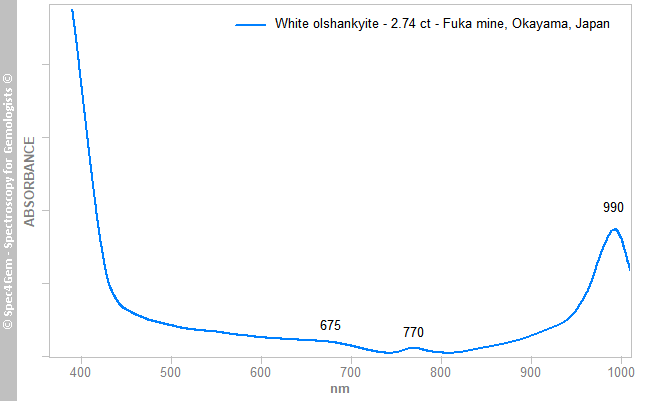Olshanskyite from Japan, Offered as Parasibirskite
- Details
- Created: Saturday, 11 July 2020 20:58
Initially published as a Gem note in the Journal Of Gemmology of the Gem-A. 2020, 37(1), 7–9.
http://doi.org/10.15506/JoG.2020.37.1.7
During the December 2019 Paris International Mineral & Gem Show, at the booth of Emmanuel Thoreux (White River Gems, in the Alsace region of north-eastern France), the author noticed few cabochons of opaque white material offered as parasibirskite, a rare mineral from Japan. This material was also available at a 2019 Denver Mineral Show.
Parasibirskite (Ca2B2O5 • H2O) is a borate known only from the Fuka mine, a marble quarry in Bicchu-cho near Takahashi, Okayama Prefecture, Japan (Kusachi et al. 1998[1]). It is a polymorph of sibirskite, and both minerals occur at the Fuka mine in veins along the boundary between spurrite-bearing skarn and limestone. Additional borates within the veins include olshanskyite (Ca2[B3O3(OH)6](OH) • 3H2O; Kusachi & Henmi 1994[2]), frolovite (Ca[B(OH)4]2; Kusachi et al. 1995[3]), takedaite, nifontovite, pentahydroborite and henmilite (Kusachi et al. 1999[4]).
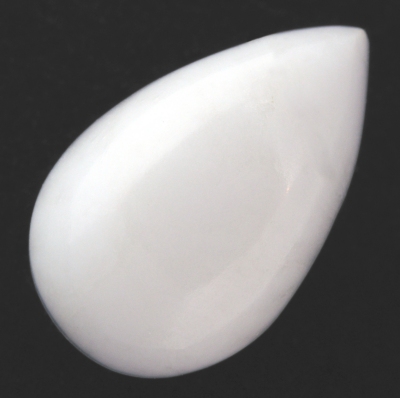 Figure 1. This 2.74 ct cabochon (13 × 8 × 4.5 mm) from the Fuka
Figure 1. This 2.74 ct cabochon (13 × 8 × 4.5 mm) from the Fuka mine in Japan was offered as parasibirskite but actually consists of
another borate mineral, olshanskyite.
| Shape | pear cabochon |
| Size | 13 × 8 × 4.5 mm |
| Color | white; opaque with slightly translucent veins |
| Lustre | dull |
| Weight | 2.74 ct |
| SG | 2.14 |
| RI | ~1.56–1.58 (difficult to read even after re-polishing the cabochon’s underside) |
| DR | ~0.02; optic character and sign undetermined because of approximate RI reading |
| Pleochroism | none |
| Polariscope / Conoscope | - |
| SWUV | inert |
| LWUV | inert |
| Magnetic susceptibility N52 | ? |
| Chelsea filter | - |
Table 1. Observational and measured properties
The RI, birefringence and SG values are all lower than those reported for parasibirskite (Kusachi et al. 1998[1]), and are more consistent with olshanskyite (Kusachi & Henmi 1994[2]) and frolovite (Kusachi et al. 1995[3]) than with other borates from the same location, even if the sample’s SG was slightly lower. A search of the Mindat and Webmineral online databases showed that few borates have such a low SG, but they also had higher RIs than recorded from the present sample. Olshanskyite and frolovite are therefore the best possibilities according to the sample’s gemmological properties, but a conclusive identification required additional testing.
Infrared reflectance spectroscopy:
Infrared reflectance spectra were collected from several spots on the cabochon, carefully changing its orientation to look for anisotropy, and all yielded the same pattern without any significant difference (Figure 2). The overall pattern of the spectrum is consistent with a borate mineral. Borates comprise various radical anions (e.g. BO3, B2O5, B2(OH)5, etc.) that produce a large variety of infrared (IR) spectra. The spectrum collected from the study specimen did not show any analogies with that of parasibirskite in transmittance mode (cf. Kusachi et al. 1998[1]), especially in the 1500–1200 cm–1 range, which is related to vibrations of the B2O5 radical. This confirmed the results indicated by the sample’s gemmological properties.
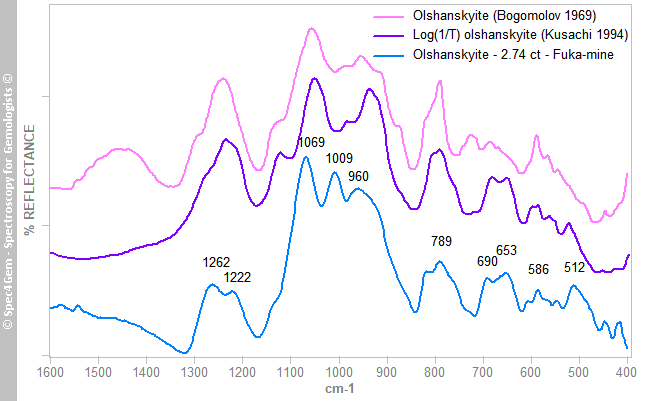 Figure 2. The IR reflectance spectrum of the cabochon in Figure 1 shows features that are consistent with those of olshanskyite from Russia and Japan.
Figure 2. The IR reflectance spectrum of the cabochon in Figure 1 shows features that are consistent with those of olshanskyite from Russia and Japan.There is a lack of available IR spectra for borates in reflectance mode; almost all of the published spectra for borates (from both Japan and Russia) are in transmittance mode. A visual comparison of the reflectance spectrum from the present cabochon to the absorption spectrum of olshanskyite from Russia (Bogomolov et al. 1969[5]) and to the transformed log(1/T) spectrum of olshanskyite from the Fuka mine (Kusachi & Henmi 1994[2]) showed correlative features, and indicated the cabochon is olshanskyite.
Raman spectroscopy:
Raman spectroscopy with 514 nm laser excitation showed an almost perfect match with the spectra for olshanskyite, which has distinctive bands at 636 and 717 cm–1 (Figure 3). An additional band at 465 cm–1 in the present sample is unexplained.
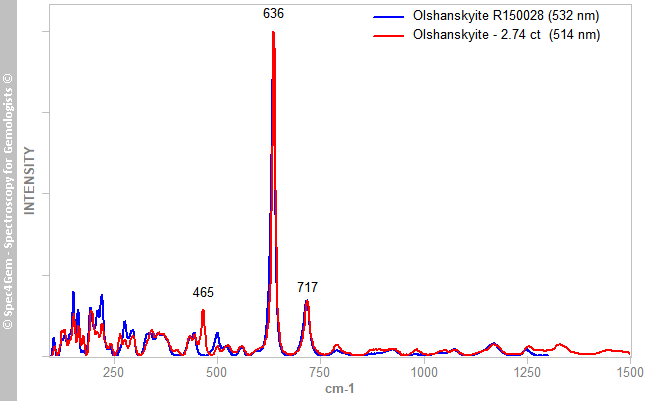 Figure 3. The Raman spectrum of the stone in Figure 1 shows a good match with a reference spectrum for olshanskyite (here, from the Shijiangshan mine, China: RRUFF R150028, collected with 532 nm laser excitation).
Figure 3. The Raman spectrum of the stone in Figure 1 shows a good match with a reference spectrum for olshanskyite (here, from the Shijiangshan mine, China: RRUFF R150028, collected with 532 nm laser excitation).UV-VIS-NIR spectroscopy:
A visible-near infrared (Vis-NIR) spectrum (Figure 4 - unpublished) was collected from a thin, translucent area of the cabochon. The resulting spectrum showed an absorption edge below 410 nm accompanied by an asymptotic ‘tail’ that extended into the NIR, together with three superimposed absorption bands at approximately 675 nm (weak and very broad), 770 nm (weak) and 990 nm (moderate). All of these are unexplained except for the 990 nm one, which the author interprets as being related to OH overtones and combinations, in accordance with the hydrous character of the material.
Photoluminescence spectroscopy:
The stone’s photoluminescence (PL) spectrum (Figure 5 - unpublished) was studied using four excitation sources: 254, 280, 375, 405 and 532 nm, but only those of 375 and 405 nm gave results, yielding bluish white luminescence (visible to the unaided eye only with the 405 nm laser). The PL spectra obtained from the two excitations differed only in their intensity, and consisted of a broad asymmetric emission from 400 to 700 nm. Such luminescence is known for olshanskyite and has been attributed to organic fluorophors (Gorobets & Rogojine 2002, pp. 269 and 272[6]).
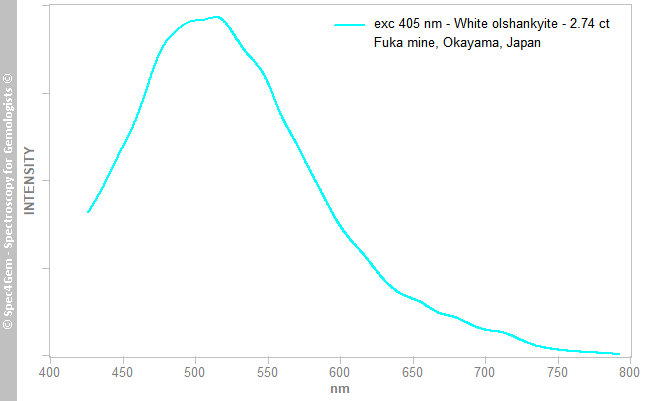 Figure 5. The 405 nm excitation photoluminescence spectrum shows a bluish-white emission related to organic fluorophors (Gorobets & Rogojine 2002, pp. 269 and 272[6]).
Figure 5. The 405 nm excitation photoluminescence spectrum shows a bluish-white emission related to organic fluorophors (Gorobets & Rogojine 2002, pp. 269 and 272[6]).Conclusion:
Standard gemmological testing showed that the cabochon was not parasibirskite, and suggested olshanskyite or frolovite as possibilities. Both IR and Raman spectroscopy conclusively identified the cabochon as olshanskyite despite the relative rareness of reference spectra for such uncommon borate minerals.
Acknowledgement:
The author thanks Aurélien Delaunay (Laboratoire Français de Gemmologie, Paris, France) for performing Raman spectroscopy.
[1] Kusachi, I., Takechi, Y., Henmi, C. & Kobayashi, S. 1998. Parasibirskite, a new mineral from Fuka, Okayama Prefecture, Japan. Mineralogical Magazine, 62(4), 521–525, https://doi.org/10.1180/002646198547891.
[2] Kusachi, I. & Henmi, C. 1994. Nifontovite and olshanskyite from Fuka, Okayama Prefecture, Japan. Mineralogical Magazine, 58(391), 279–284, https://doi.org/10.1180/minmag.1994.058.391.10.
[3] Kusachi, I., Henmi, C. & Kobayashi, S. 1995. Frolovite from Fuka, Okayama Prefecture, Japan. Mineralogical Journal, 17(7), 330–337, https://doi.org/10.2465/minerj.17.330.
[4] Kusachi, I., Kobayashi, S., Henmi, C. & Takechi, Y. 1999. Calcium borate minerals in the CaO-B2O3-H2O system at Fuka, Okayama Prefecture, Japan. Journal of Physics of the Earth, 28(2), 41–46, https://doi.org/10.2465/gkk1952.28.41 (in Japanese).
[5] Bogomolov, M.A., Nikitina, I.B. & Pertsev, N.N. 1969. Olshanskyite, a new calcium borate. Doklady Akademii Nauk SSSR, 184(6) 1398–1401 (in Russian).
[6] Gorobets, B.S. & Rogojine, A.A. 2002. Luminescent Spectra of Minerals. RPC VIMS, Moscow, Russia, 300 pp.


